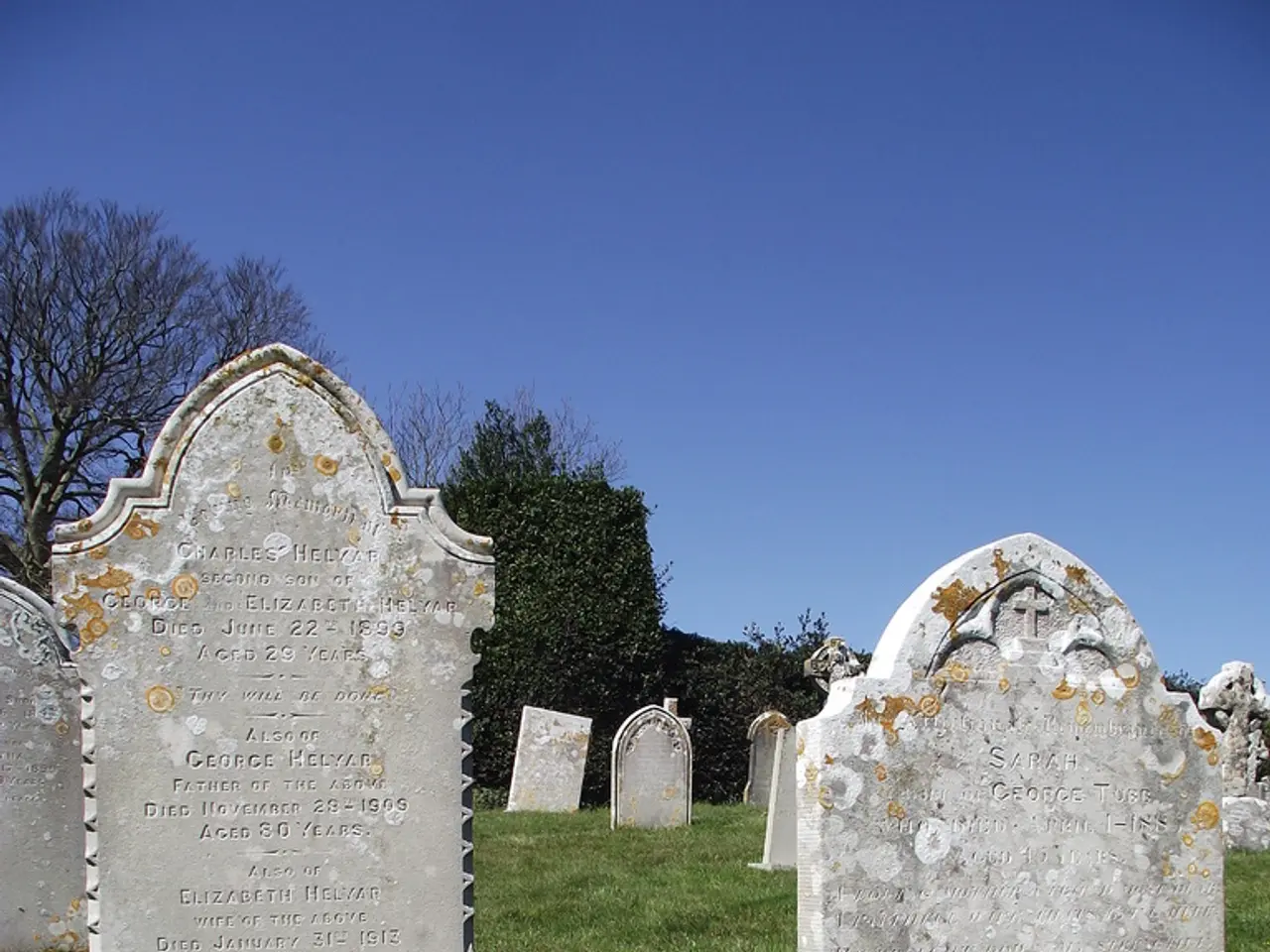Unearthed investigation at Ireland's mass burial site for infants, referred to as a "chamber of horrors"
Unearthed Mass Grave at Tuam Mother and Baby Home Reveals Shocking Truths
In the heart of County Galway, Ireland, a dark chapter of history has come to light. The Tuam mother and baby home, operated by the Bon Secours Sisters between 1925 and 1961, has become the centre of a national and international scandal.
The home, designed to house unmarried pregnant women and their children, was a place of segregation and hardship. Mothers were forced to work without pay, and their babies were often taken away, adopted out without their consent. Some mothers were even sent away after a year, despite pleas to stay longer, leaving them to grapple with the trauma of losing their children.
In 2014, a shocking discovery was made. Local historian Catherine Corless uncovered evidence suggesting the existence of a mass grave on the site. Excavations starting in 2025 confirmed a burial site likely containing the remains of around 800 babies and young children. These remains were found interred in a disused underground sewage structure on the grounds of the home.
The children ranged from 35 weeks gestation to 3 years old. The sewage pit, later referred to as a "chamber of horrors," contained these tiny lives, their fate unknown for decades. Scientific studies indicate the remains are commingled, making identification difficult, but efforts are ongoing to reconstruct and investigate them thoroughly.
The Tuam home saw 9,000 children, or 15% of its total, die during the 20th century. The Commission of Investigation into Mother and Baby Homes, a government-commissioned investigation, determined that approximately 9,000 children died across 18 such homes nationwide, mostly from respiratory infections and gastroenteritis, reflecting harsh and inadequate living conditions.
The discovery of the mass grave at the Tuam home has forced Ireland and the Catholic Church to confront decades of abuse, coercion, and secrecy surrounding mother and baby homes. The Catholic order involved has issued a "profound apology" for failing to protect the dignity of those housed there.
The ongoing exhumation site is under forensic control, with survivors and families to be involved sensitively. The case has also inspired a wider re-examination of similar institutions and their legacy in Irish society.
This history highlights the systemic stigmatization and mistreatment of unmarried mothers and their children in 20th-century Ireland. The Tuam mass grave discovery has opened a national reckoning with this past, leading to official apologies and ongoing forensic work at the site.
Summary of key points:
- Operation period: 1925–1961
- Management: Bon Secours Sisters, Catholic order
- Residents: Unmarried pregnant women and their children
- Treatment: Segregation, unpaid labor, separation of mothers/children
- Mass grave discovery: Around 800 infant and child remains found in septic tank underground
- Causes of death: Mainly respiratory infections, gastroenteritis
- Investigation body: Irish Commission of Investigation into Mother and Baby Homes
- Impact: National reckoning with institutional abuse, official apologies, ongoing forensic work at site
- The Tuam mother and baby home in County Galway, Ireland, operates from 1925 to 1961.
- The home was run by the Bon Secours Sisters, a Catholic order.
- While it was designed to house unmarried pregnant women and their children, it turned into a place of segregation and hardship.
- Mothers were compelled to work without pay, and their babies were frequently adopted out without their consent.
- Some mothers pleaded to stay longer, but were sent away despite the trauma of losing their children.
- In 2014, a mass grave was suspected on the site, and excavations in 2025 confirmed the presence of approximately 800 infant and child remains.
- The remains were found in a disused underground sewage structure on the grounds of the home, later referred to as a "chamber of horrors."
- The children ranged from 35 weeks gestation to 3 years old.
- Scientific studies suggest the remains are commingled, making identification difficult.
- The Tuam home saw 9,000 deaths during the 20th century, with most deaths attributed to respiratory infections and gastroenteritis.
- These harsh and inadequate living conditions reflect a wider pattern across 18 such homes nationwide.
- The Catholic order involved has issued a "profound apology" for failing to protect the dignity of those housed there.
- The ongoing exhumation site is under forensic control, with survivors and families involved in a sensitive manner.
- The discovery has sparked a broader examination of similar institutions and their impact on Irish society.
- This history serves as a reminder of the systemic stigmatization and mistreatment of unmarried mothers and their children in 20th-century Ireland.
- The Tuam mass grave discovery has instigated a national reckoning with this past, leading to official apologies and ongoing forensic work at the site.
- News of this shocking discovery has created a significant stir in the world, leading to international scrutiny of Ireland's past.
- In addition to the Tuam home, other art institutions and agencies must also take a closer look at their role in supporting such organizations.
- The tragedy at Tuam has triggered discussions about chronic diseases and medical conditions, especially in vulnerable populations.
- Cases like these emphasize the importance of workplace-wellness programs to recognize and address mental-health issues.
- Medical-conditions such as cancer, respiratory, digestive, eye, hearing, skin, and autoimmune disorders must be taken seriously by governments and healthcare providers.
- Mental-health discussions have risen in relevance, with a focus on men's health and women's health.
- Family-health should prioritize the healing and support of families affected by tragic events like Tuam.
- Support for sexual-health and reproductive rights is crucial to preventing histories like Tuam from repeating themselves.
- CBD and therapies/treatments have been recently explored to help manage symptoms of neurological disorders and skin-conditions, contributing to overall health and wellness conversations.




